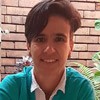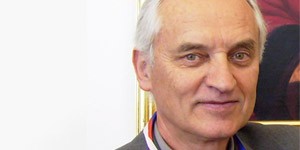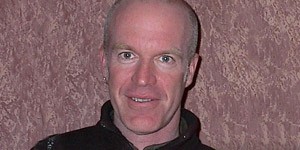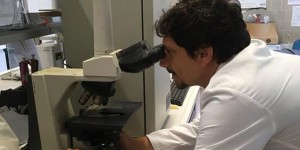By Paola Pineda Villegas

Degree in Medicine and Surgery from the Pontifical Bolivarian University. Specialist Degree in Medical Law from the same university. Master's Degree in HIV from the Rey Juan Carlos University of Madrid. Member of the Curativa medicinal cannabis research group.
Some years ago, faced with a patient who was not responding to conventional treatment, Dr Pineda set out to find new alternatives for pain management. It was then that she first started using cannabis for therapeutic purposes. She later took part in the first discussions on the subject in the Colombian Congress, where she met mothers of children with refractory epilepsy who were seeking medical advice on treatment for their children. Although she began working on the subject in her spare time, she now devotes all of her professional life to it. She has been involved in the treatment of over 1800 people looking to cannabis as a therapeutic tool.
This series of chronicles describes the personal experience of a Medical Doctor who prescribes medical cannabis in his/her country. Each article is narrated in the first person and reports the subjective experience of each expert.
"Doctors could do great things they have never imagined if they believed more in their own inner power and strengthened their patients' inner power by connecting with them. To achieve this, they should not put aside their scientific/technical capabilities or their spiritual strength as human beings. If his or her great knowledge were twinned with the enormous force that emanates from the spirit, a new way of thinking and acting would surprise medical science and the hopelessly sick."
– Taken from the book The Evicted Doctor, Alfonso Tamayo Tamayo. .
Like every day in the last years of my clinical practice in the comprehensive care programme for people with HIV, I had one patient who had been attending for a few months, whose infection was controlled, with an undetectable viral load and a good CD4 lymphocyte count. He was very adherent to his antiretroviral treatment but he had a pain in the hip and insomnia that did not respond to conventional management. That day, I decided to stop his treatment for infection control and allow it continue its course, given the negative impact that lack of sleep and no pain control were having on his quality of life.
I proposed that we give each other a month and that between the two of us we look for other therapeutic tools. And so it was, one month later in our usual medical check-up, he proposed the use of cannabis for therapeutic purposes and my immediate response was affirmative. My knowledge on the subject came from the university's toxicology area. Three days after starting cannabis, the patient called me to let me know that he had slept very well and that the pain had decreased by a significant percentage. It was at that moment that interest in this wonderful plant awoke in me.
I began to look for information and found that there had been talk of an endocannabinoid system since the 1990s, which is believed to have been around since the beginning of evolution as a human species, and that has a fundamental role in homeostasis or balance.
People related to the subject began to appear; the first of them, two engineers who had a company in Medellin that made topical products found to be very useful for people with pain from different causes, who had not found an answer in conventional medicine based on the evidence that I had exercised since I graduated as a doctor.
The first discussions were held together at the Congress of the Republic in 2014, where we were talking about cannabis regulation for medicinal purposes in Colombia. Remember that at that time there was Law 30, 1986 in Colombia, which allowed the use of cannabis for medicinal purposes, although it had not been regulated, and this law enabled many of us who work in this field today to feel supported.
At that time, I understood, that I should continue on this path. In the congress debate, I met the families of girls and boys with refractory epilepsy who had been promoting the issue, exploring new alternatives to improve the quality of life of their children and the entire support network. I must confess that my knowledge of epilepsy was very limited and that when a person in the HIV programme had a seizure I referred them immediately to the neurology specialist. Of course I was afraid, but following my intuition I agreed to start treatment with two of these girls. Looking back today, if reason had prevailed, over heart and intuition, I would not be telling this story.
With a firm conviction of the importance of teamwork, and without forgetting that my field of action was not neurology, we started working with these girls. The families accepted, because the option they were contemplating was to move to California to seek access to medical cannabis, which would mean that the family would have to start life over with the social, cultural, emotional and economic implications that were already affected by their girls' condition.
Cannabis extracts were available at that time but the cannabinoid ratio was unknown, contained by drop. Ultimately, everything I always knew in the drugs I formulated.
There were no more options. All available drugs authorised for managing epilepsy had been used on these girls with no effect. So these families had decided to go ahead with cannabis use, with or without the support of health professionals. I remember both families perfectly; one of the girls had multiple convulsions during the consultation, the fatigue and despair of her mother and grandparents were evident.
I handed them a jar with cannabis extract with some basic recommendations, limited to the minimum knowledge I had at that time, specifically requesting that we communicate daily. After four days, Lele entered into a convulsive status that required in-hospital management, although the mother decided with conviction, strength and courage to continue treatment. I allowed myself to be infected by her enthusiasm and stubbornly decided to support her. I confess that I did so with great fear because it was a field that I was just beginning to explore.
A few weeks after hospital discharge, the crises began to diminish significantly, they became milder, the advances in the motor, cognitive and behavioural part became evident and we began to progressively decrease oral antiepileptics, all of which gave us the strength to continue researching and working together alongside these families. More and more families came to my office with cases such as Lele's, as it was with this family that I discovered that hospital waiting rooms and intensive care units had become a place for all these families to socialise.
With the passing of the months, more and more time in my professional practice was devoted to this subject, which today occupies all of my own professional time and that of the staff.
We worked closely with growers and processors and although the preparations were still handmade, more resources were sought to improve the processes. We already had a small group of patients with refractory epilepsy and the results were favourable in many of them. So we set out to find evidence to measure the cannabinoid contents within the extracts that the growers had been preparing for the patients we attended. And it was there that our hypothesis about a higher THC percentage in the extracts could be tested. This slightly contradicted what we read about the preponderant role of CBD in controlling epilepsy and the non-indication of THC in these patients.
With these results, and having access to extracts with different ratios, some with more CBD, we proposed to families the possibility of changing patients taking what the literature said into account. Some parents decided to continue with extracts containing more THC with their children due to the good results they had achieved, others decided to try more CBD. In some cases there was greater control and in others, on the contrary, there was a setback, which is where we began to understand that the protocols with cannabis don't always apply. You have to be versatile and the key is personalised medicine and that the THC so condemned by many was also important in managing epilepsy.
Today, after several years in this field, there are many stories to tell. Many learnings, many people having passed through our office, all of whom have been great teachers. The results have been excellent in many of them and in others it has not worked, because as with any therapeutic tool, the answers are variable and don't depend solely and exclusively on one or several substances, but on the interaction with each human being, unique and unrepeatable.
There is still much to experience and learn. Access to cannabis is allowed in Colombia; up to 20 plants can be grown at home for personal consumption, which is key to price control. Foundations led by families of girls and boys with epilepsy have been formed based on self-cultivation, where patients or family members cultivate their own medicine, and which is part of occupational therapy that empowers users to cope with their health condition. On the other hand, since the regulation of Law 1787, 2016, many companies with foreign investment and other Colombian companies have applied for licenses to cultivate psychotropic, non-psychotropic cannabis, seeds, transformation, export and research, although many already have licenses, there are still some steps required before products will be available in the market. We started attending patients before the entire regulatory process, based on Law 30, 1986 and the law of medical ethics. Therefore, patients access products today that have been developed with multiple ratios and profiles, while work is ongoing in the search for alliances with companies that are already licensed so that no patient's treatment is interrupted. There are more doctors in the country who formulate cannabis. They have been training in different seminars held throughout the country, with more and more colleagues interested in the subject in different regional areas.
As a working group, we are committed to mastering formulas to guarantee personalised medicine, to work with a complete plant always keeping the entourage or synergistic effect in mind, to accompanying patients beyond the office, to comprehensive therapies, where fundamental issues such as diet, exercise and other alternative therapies are taken into account, also promoting healthy lifestyle habits in general, which potentiate the effects of this ancestral plant that is finally recovering the place it deserves.


